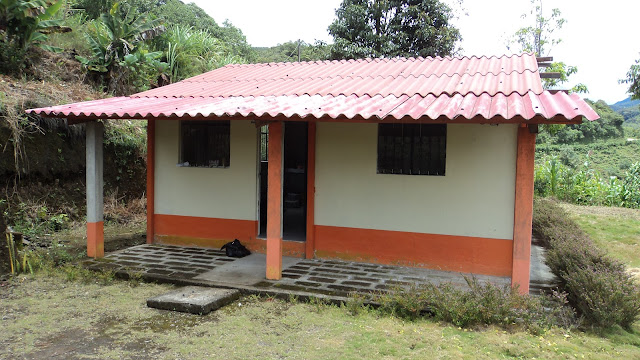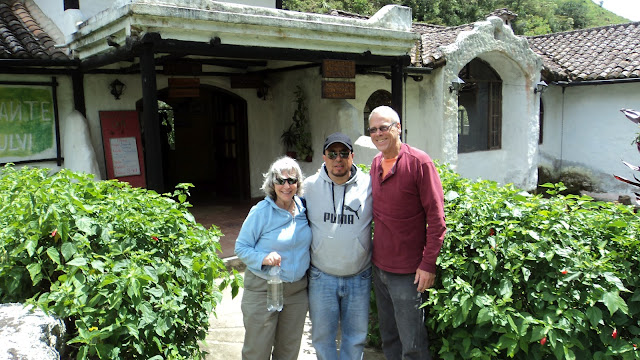So what is the climate REALLY like in Cotacachi? It is comfortable, steady, and somewhat predictable. It is never COLD and never HOT. Some call it eternal spring. There are hundreds of things that I love about Cotacachi, but the weather is among the top five.
 |
| Snow dusts the top of Father Imbabura |
If you ask 10 locals about the climate of Cotacachi you will most assuredly get 10 entirely different responses. Perhaps people are numbed into complacency. You see there are just two seasons in Cotacachi, summer and winter. No, I don’t mean Currier and Ives Christmas nor am I talking about those Lazy Crazy Hazy Days of summer either. Winter here is sometimes rainy; summer is nearly always sunny and fair. Summer is June through September.
 |
| Brahma calves graze and lounge in lush grass in this pasture just outside Cotacachi in summer and winter. |
The average daily temperature is 61 degrees every day all year long. That means you top out on average about 71 and bottom out at 51. 71 feels like 78 here by the way. It has something to do with the 8000 feet above sea level thing. The sun also rises and sets mas o menos the same every day also.
I used to live in northwest Iowa. Our winters there were as harsh and as long as in Minneapolis. When my sister’s family came to visit in winter from Fairbanks they’d be chattering from the cold. I made a promise to myself in January 2010 that I would never endure that kind of winter ever again. I haven't.
Rachel is from Oklahoma. 110 degrees in Tulsa is not that unusual and it can go on for weeks. Oh, and they have high humidity too. We will never pay for heating or air conditioning ever again, ever. We will be able to go for a walk outside in comfort every day, the rest of our lives.
 |
| I just smiled this morning as I was riding my bike along this meadow. I could see the snow on Mt. Cotacachi and knew it would never fall in this land of Eternal Spring. |
Do I miss the change of seasons? Well I loved spring in the US. It was always a thrill when I could find my mailbox again. The promise of new life, color, and beauty put an extra bounce in my step. I also loved the fall. The color of the trees was just God going crazy with His paintbrush. I miss that a lot. The only thing I didn’t like was the promise that winter was on its heels. The visual euphoria was short lived. Life seemed always to revolve around the dread of winter.
What do you wear in Cotacachi? Well, again you will get many answers to that question. You will see many answers to that question. In the same moment in time you will see an indigenous man with a warm coat and hat and a gringo like me in a t shirt. I’ll be on my bicycle wearing a t shirt and a sweatshirt over it at 7:30 AM. By the time I get back for breakfast the sweatshirt is tied around my neck. Eternal spring.


























